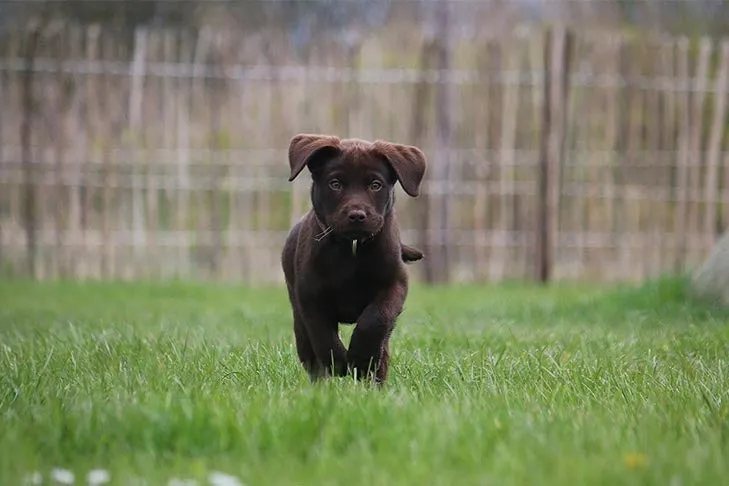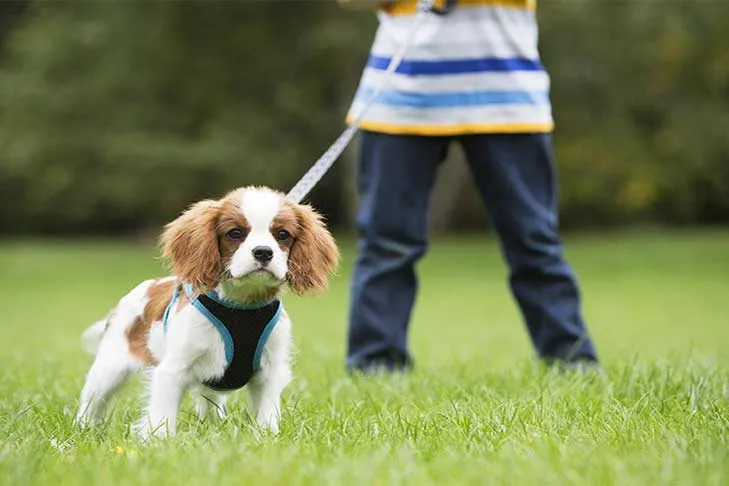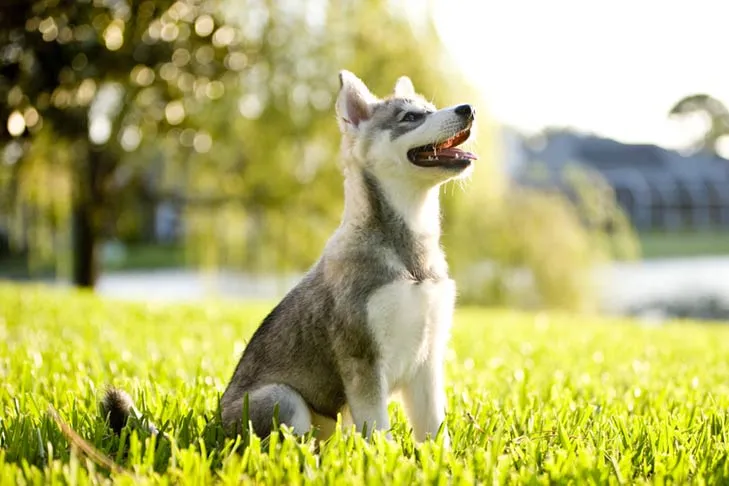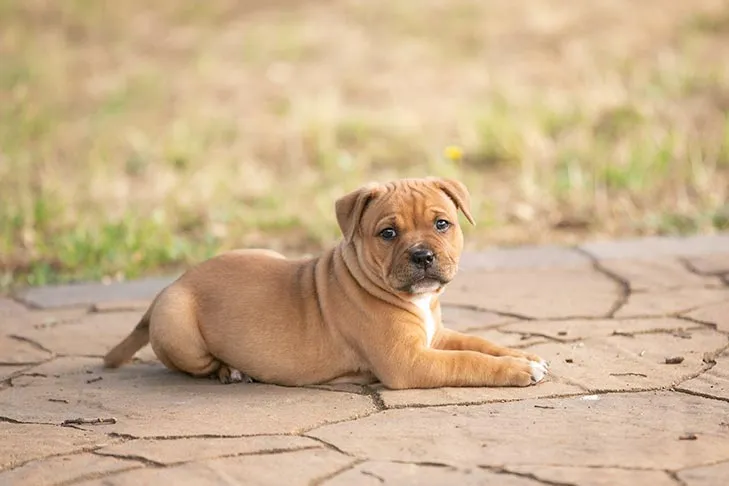Embarking on the journey of raising a puppy is an exciting experience, and one of the most rewarding aspects is teaching them foundational manners and behaviors. Training A Puppy Basic Commands is not just about obedience; it’s about establishing clear communication, building trust, and ensuring their safety and well-being. These early lessons provide a crucial framework for a well-adjusted companion, setting the stage for a lifetime of positive interactions and preventing common behavioral issues before they start.
Effective puppy training hinges on consistency, patience, and positive reinforcement. By focusing on essential commands from a young age, you empower your puppy with the skills to navigate their world confidently and respond appropriately in various situations. This guide will walk you through the core principles and step-by-step instructions for teaching your puppy the five most important basic commands: Come, Loose-Leash Walking, Sit, Down, and Stay. With dedication and a positive approach, you’ll lay a strong foundation for your puppy’s success in any future training endeavors.
Laying the Foundation: Essential Puppy Training Principles
To set your puppy up for success, it’s vital to understand the fundamental principles that govern effective and humane dog training. Knowing what is expected of them makes puppies feel secure and confident in their ability to meet your goals.
The bedrock of successful puppy training is positive reinforcement. This method involves rewarding your puppy for desirable behaviors, making them more likely to repeat those actions. The goal is to use something your dog values – not as a bribe, but as a clear signal that they’ve done something right. Reinforcement can be anything your dog enjoys, though high-value food treats are often the most convenient and effective for initial training. Small, soft pieces of special treats like freeze-dried liver or even their regular kibble can work wonders. Lavish verbal praise, delivered in a happy tone, or the chance to play with a favorite toy, can also serve as powerful rewards. When you consistently pair praise with treats, your puppy quickly learns that “Good dog!” is a positive reinforcement in itself.
It is crucial to avoid using punishment, such as yelling, leash corrections, or physical reprimands. Punishment can confuse and frighten a puppy, making them anxious and unsure about what is being asked. Remember, puppies don’t inherently know our rules; we can’t expect them to understand concepts they haven’t been taught. Patience is paramount in helping your new puppy learn appropriate behavior. For a deeper dive into the basics to training a puppy, understanding these initial principles is key.
Puppies are ready for very simple training as soon as they come home, typically around 8 weeks old. Always keep training sessions brief, ideally just five to ten minutes long, and always conclude on a positive note. If your puppy struggles with a new behavior, end the session by reviewing something they already know well, offering plenty of praise and a generous reward for their success. Allowing your puppy to become bored or frustrated will hinder their learning progress and can make future training more challenging. A positive and successful end to each session ensures they look forward to the next one.
 Happy Labrador puppy running freely in a grassy field, eager for training
Happy Labrador puppy running freely in a grassy field, eager for training
Mastering the “Come” Command (Recall)
Teaching your puppy to “come” when called, or a reliable recall, is one of the most critical commands for their safety and your peace of mind. It allows you to bring your puppy back to you in potentially dangerous situations or simply when it’s time to go inside. Begin recall training in a quiet, distraction-free environment, preferably indoors.
- Introduction to the Cue: Sit with your puppy and say their name followed by the word “come.” Immediately after, give your puppy a treat. Repeat this several times. At this stage, your puppy doesn’t need to do anything other than hear the word and receive a reward, associating “come” with positive things.
- Looking Up: Drop a treat on the floor near you. As soon as your puppy finishes it, say their name. When they look up at you, immediately give another treat. This helps them connect their name with focusing on you.
- Short Distances: Once your puppy consistently looks up when you say their name, start tossing the treat a little further away. When they finish the treat and turn back to face you upon hearing their name, reward them. If they don’t respond, move closer and go back to a step where they can succeed easily. Avoid repeating your puppy’s name without a response, as this can teach them to ignore it.
- Adding Movement and Fun: Make it a game! Toss a treat a short distance away, and as your puppy goes to get it, take a few quick steps backward while happily calling their name. Puppies naturally enjoy chasing, so they should eagerly follow you.
- Big Rewards for Coming: When your puppy catches up to you, shower them with praise, multiple treats, or engage them in a brief tug-of-war with a favorite toy. The experience of coming to you must be incredibly fun and rewarding.
- Gradual Progression: Gradually increase the distance and introduce more challenging locations for practice. When training outdoors, always use a safe, enclosed area. A long leash can be helpful initially to maintain control and ensure success. For a broader overview of basic command training for dogs, a reliable recall is often considered the cornerstone.
When your puppy comes to you, resist the urge to immediately reach out and grab them, as this can be startling or intimidating. Instead, kneel down, face them slightly sideways, and offer treats as you gently reach for their collar. This builds a positive association with being handled after coming.
Teaching Polite Loose-Leash Walking
Walking politely on a loose leash is a crucial skill for both you and your puppy, making walks enjoyable and safe. The goal is for your puppy to walk comfortably at your side without pulling, allowing the leash to remain slack. While competition obedience uses “heel” for a precise position, for puppy training, “loose-leash walking” is more relaxed, with cues like “let’s go” or “forward” often preferred.
Choose a consistent cue and stick with it. Whether your puppy walks on your left or right side is entirely up to you, but be consistent to avoid confusion and prevent them from zig-zagging in front of you.
- Leash Comfort: First, ensure your puppy is comfortable wearing a leash. This can feel strange initially, and some puppies may try to bite it. Give your puppy treats each time you put the leash on, creating a positive association.
- Initial Position: Stand next to your puppy with the leash in a loose loop. Give them several treats in a row for standing or sitting calmly beside your leg.
- Taking a Step: Take one step forward and encourage your puppy to follow, immediately rewarding them with a treat as they catch up to your side.
- Walking and Rewarding: Continue walking, consistently giving treats at the level of your knee or hip as your puppy walks happily beside you. The treats should encourage them to stay in position.
- Changing Direction: If your puppy runs ahead or pulls, simply change direction immediately. Call them back to your side, reward them when they are in position, and then continue walking. This teaches them that pulling gets them nowhere, while staying by your side leads to rewards. Gradually increase the time between treats, from every step to every other step, and so on.
- Sniffing and Resuming: Allow your dog plenty of time to sniff and explore during walks – it’s an important mental enrichment activity. When it’s time to resume walking, give your chosen cue, such as “Let’s go!” in a cheerful voice, and reward them for returning to position and walking with you.
 Cavalier King Charles Spaniel puppy learning loose-leash walking outdoors
Cavalier King Charles Spaniel puppy learning loose-leash walking outdoors
How to Teach Your Puppy to “Sit”
The “sit” command is one of the most fundamental and useful commands, helping your puppy learn self-control and offering a polite way for them to greet people or wait for food. There are two primary methods for teaching your puppy what “sit” means.
Method 1: Capturing the Behavior
This method involves rewarding your puppy when they naturally offer the desired behavior.
- Prepare: Stand in front of your puppy, holding some of their kibble or high-value treats.
- Wait for the Sit: Patiently wait for your puppy to sit on their own. This might happen naturally as they look up at you or try to figure out what you want.
- Mark and Reward: The moment their bottom touches the ground, say “Yes!” (or click a clicker if you use one) and immediately give them a treat.
- Reset: Take a step backward or sideways to encourage them to stand up again, then wait for them to sit naturally once more. Reward immediately.
- Add the Cue: After several repetitions where your puppy is consistently sitting, begin saying “Sit” just as they start the motion of sitting. Eventually, the verbal cue will prompt the action.
Method 2: Luring with a Treat
Luring uses a treat to guide your puppy into the desired position.
- Position and Lure: Get down in front of your puppy, holding a treat as a lure.
- Guide Upward: Place the treat right in front of your puppy’s nose, then slowly lift the food above their head and slightly back towards their tail. As their nose follows the treat upward, their bottom will naturally lower to the ground.
- Reward: The instant their bottom touches the ground, allow them to eat the treat.
- Fade the Lure: Repeat with the food lure one or two times. Then, remove the food from your hand and use just your empty hand to make the same motion. Continue to reward your puppy with a treat from your other hand after they sit.
- Add the Cue: Once your puppy reliably follows your hand signal, begin saying “Sit” right before you give the hand signal. These essential skills are among the most basic things to teach a puppy for daily life.
Regardless of the method, never physically push or force your puppy into the sitting position. This can be confusing, uncomfortable, or upsetting for some dogs and can undermine their trust.
 Alaskan Klee Kai puppy successfully performing the sit command in a park
Alaskan Klee Kai puppy successfully performing the sit command in a park
Guiding Your Puppy to “Down”
The “down” command is another excellent tool for promoting calmness and control, especially useful in public places or when you need your puppy to settle. Teaching “down” can be done using similar capturing and luring methods as “sit.”
Method 1: Capturing the Behavior
- Observe: Begin in a quiet, less stimulating room (a bathroom or small hallway can help). Wait for your puppy to naturally lie down.
- Capture and Reinforce: The moment your dog lies down, say “Yes!” and immediately reinforce the behavior with a treat.
- Reset and Repeat: Give them a release cue (like “OK” or “Free”) to encourage them to stand up again (you might need to lure them up with a treat initially). Then, wait for them to lie down naturally once more and reward.
- Add the Cue: Once your puppy is quickly lying down after standing, start saying “Down” just before they perform the action.
Method 2: Luring from Sit or Stand
- Lure Towards Floor: Hold a treat to your dog’s nose. If they are standing or sitting, slowly bring the treat straight down to the floor, then gently slide it away from their nose, parallel to the ground, and slightly between their front paws.
- Reward Elbows Down: As your dog follows the treat, their elbows will eventually touch the floor. The instant their elbows touch, give them the treat.
- Refine the Down: After a few repetitions, once they are consistently lying down, begin to remove the food from your hand. Use your empty hand to make the same guiding motion, but give the treat after they have fully laid down from your other hand.
- Add the Cue: When your dog reliably follows your hand signal, start saying “Down” just as you begin to move your hand.
As with “sit,” never use force to push your dog into a down position. Always rely on gentle guidance and positive reinforcement.
 Staffordshire Bull Terrier puppy demonstrating the down command outdoors
Staffordshire Bull Terrier puppy demonstrating the down command outdoors
Building a Reliable “Stay” Command
A puppy who understands the “stay” cue will remain in a specific position (like sit or down) until you release them with another cue. “Stay” is a duration behavior, meaning the goal is to teach your dog to maintain the position for increasing lengths of time and distance.
- Teach the Release Word: First, choose a consistent release word, such as “OK,” “Free,” or “Break.” Stand with your puppy in a sit or stand position, toss a treat on the floor, and say your chosen release word as they move to get the treat. Repeat this a few times until your puppy understands that the release cue means they can move their feet and get a reward.
- Initial Stay – Short Duration: Put your puppy in a “sit” position. Turn to face them and give them a treat. Pause for just one second, then give them another treat for staying in the sit. Then, give your release word.
- Gradually Increase Time: Slowly increase the time you wait between treats while your puppy stays in position. You can mentally count or sing the alphabet to help track the duration.
- If They Break: If your dog gets up before the release cue, it’s okay! This simply means you asked for too much too soon. Make it easier by going back to a shorter duration where they can succeed, then gradually build up again.
- Adding Distance – One Step: Once your dog can stay in a sit for several seconds, you can begin adding distance. Place them in a sit and say “Stay.” Take one step backward, then immediately step back to your puppy, give them a treat, and say your release word.
- Building Distance: Continue to gradually increase the number of steps you take away from your puppy, always returning to them to reward and release. Make sure to keep it easy enough for your puppy to remain successful. Practice facing them and eventually with your back turned (which simulates real-life scenarios more closely).
The key to a strong “stay” is not expecting too much too soon. Training goals are achieved in small increments. If your puppy struggles, simplify the exercise. The more solidly they learn the command, the longer and more reliably they will perform it. While these methods apply universally, some breeds may have unique learning styles. For instance, you can find specific guidance on basic commands for German Shepherds.
Conclusion
Successfully training a puppy basic commands like Come, Loose-Leash Walking, Sit, Down, and Stay provides more than just a well-behaved dog; it fosters a strong bond built on mutual understanding and trust. Remember that patience, consistency, and positive reinforcement are your most powerful tools. Keep training sessions short, fun, and always end on a high note to keep your puppy eager for more learning.
By investing time in these foundational skills, you are equipping your puppy with the confidence and manners needed to thrive in any environment. With dedication, your puppy will master these commands, setting them up for success in more advanced activities, perhaps even leading to basic agility training for dogs someday. Embrace the journey of discovery and growth with your furry friend, and enjoy the lifelong companionship that comes from a well-trained dog.
